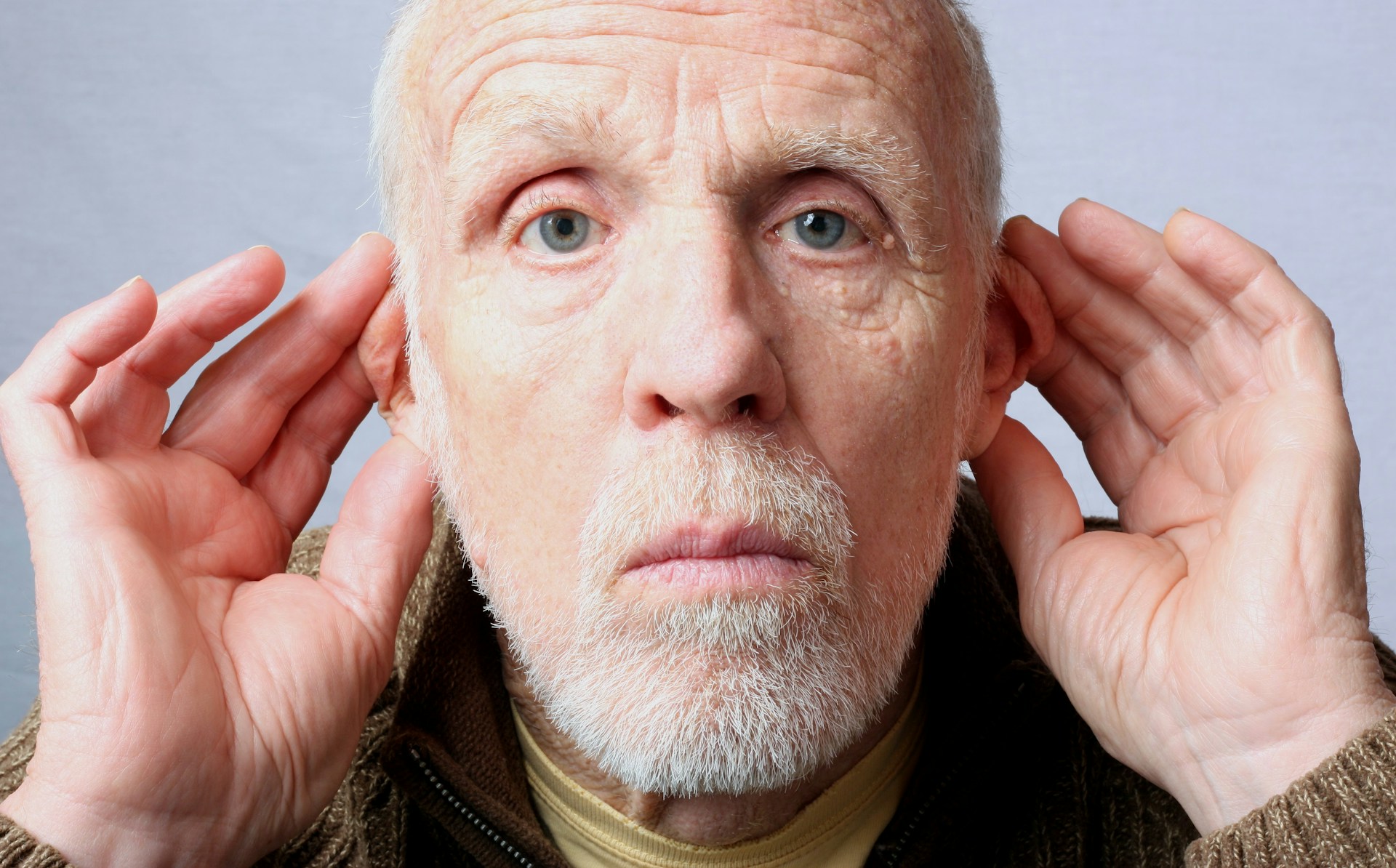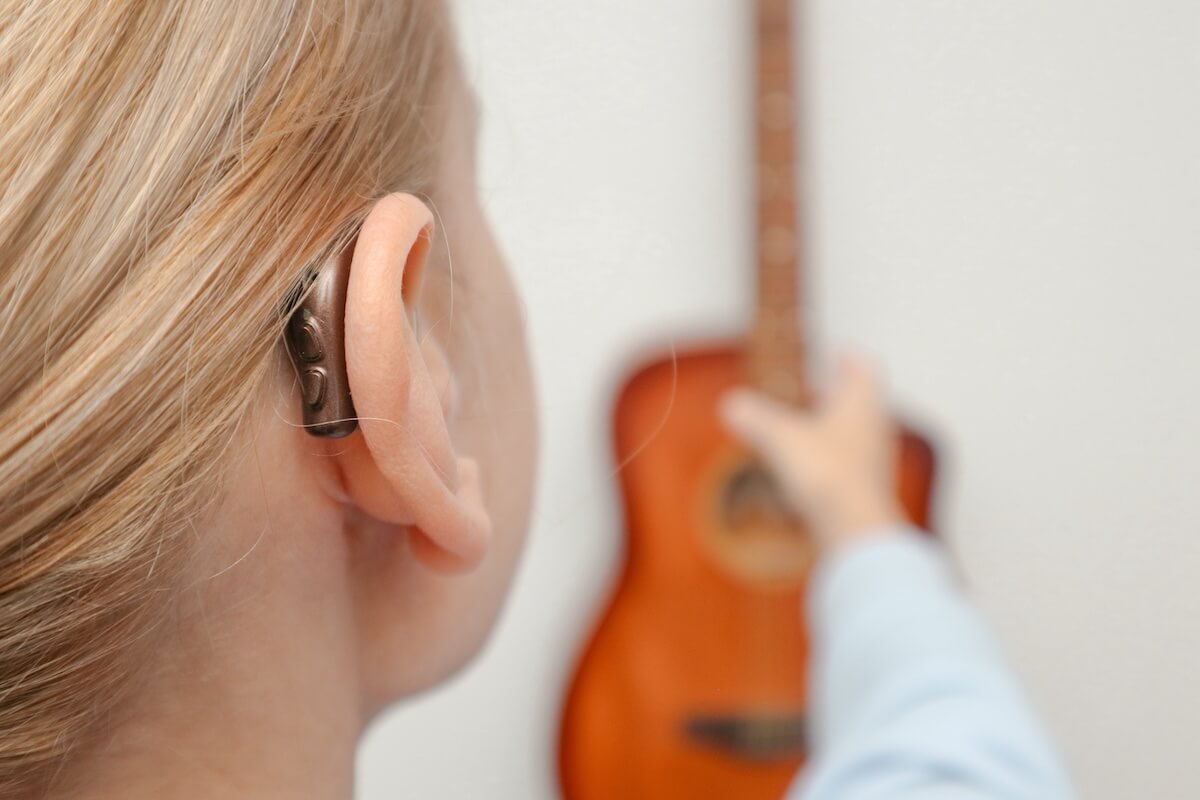What is sensorineural hearing loss?
Understanding the cause, treatment, and avoidance of sensorineural hearing loss

Sensorineural hearing loss (SNHL) happens when the inner ear or the auditory nerve is damaged. This damage prevents sound from being properly converted into signals that the brain can understand. It’s very common, especially in people in their 70s, and is the cause of hearing problems in 9 out of 10 older adults.
There are different types of SNHL, which refer to how the loss affects the person.
- Unilateral: Hearing loss only affects one ear.
- Bilateral: Hearing loss occurs in both ears equally.
- Asymmetrical: Hearing loss occurs in both ears, but one ear is more affected.
- Sudden: Hearing loss occurs quickly, often over the course of hours or days.
The 3 key takeaways
- Sensorineural hearing loss is caused by damage to the inner ear or auditory nerve — which can result from aging, noise exposure, medications, illnesses, or genetic conditions.
- Common symptoms include muffled hearing, trouble understanding speech, and tinnitus — and people with SNHL may find it hard to follow conversations, especially in noisy settings.
- Diagnosis involves hearing tests and imaging — and hearing loss treatment can include hearing aids, cochlear implants, or other assistive devices.
Causes of sensorineural hearing loss
While the most common cause of SNHL is age-related presbycusis, which is caused by the degeneration of tiny hair cells in the inner ear, there are several other causes. Some of these can be prevented, while others are simply a matter of genetic predisposition.
Congenital
Congenital sensorineural hearing loss is something a person is born with. Generally, this hearing loss is present at birth in roughly one out of every 1,000 newborns. Babies who are born prematurely or spend extended periods in the NICU are more likely to have congenital hearing loss due to issues like lack of oxygen or maternal infections during pregnancy.
Genetic syndromes can also cause congenital hearing loss, such as Pendred Syndrome (the most common), which creates SNHL as well as an enlarged thyroid.
Acquired
Unlike congenital SNHL, acquired hearing loss occurs after birth or sometime during a person’s life. It can be caused by aging, head trauma, and prolonged exposure to loud noises. Additionally, acquired SNHL can be caused by medications like aspirin and loop diuretics, as well as infections such as measles.
Hearing and balance disorders, such as Ménière’s Disease, and disorders like Parkinson’s can also create SNHL. Ménière’s Disease, in particular, is a more common cause of acquired SNH, which is typically unilateral, and the inner ear disease also leaves the individual with vertigo and tinnitus.
Genetic Factors
Like many other health concerns, sensorineural hearing loss can often have genetic factors. It’s common for SNHL to run in families, even if it’s not noted at birth.
One common genetic SNHL condition is late-onset sensorineural hearing loss, which usually happens after childhood. Another rare type of SNHL is cookie bite hearing loss, a mid-frequency hearing loss, which is hereditary and affects less than 1% of the SNHL population.
Symptoms and diagnosis of sensorineural hearing loss
Common symptoms
The most common symptoms of SNHL include comprehension issues, difficulty hearing high pitches, dizziness, a feeling of pressure in the ear, muffled hearing, and tinnitus, or a constant ringing or buzzing sound.
How is SNHL diagnosed?
Just presenting with potential symptoms of sensorineural hearing loss isn’t enough to diagnose it. Instead, the individual should undergo official diagnostic exams to pinpoint the cause of hearing loss.
Audiometry tests
An audiometry test is a medical test done by a doctor or audiologist that evaluates hearing ability and determines what kind of hearing loss you may be suffering from. Different types of these tests include pure-tone audiometry, which plays frequencies and the patient says whether they can hear them or not, and speech audiometry, which presents a patient with spoken words at varying volumes.
Another audiometry test is tympanometry, which measures the movement and pressure of the eardrum and the bones in the middle ear to determine sound transmission. And, finally, there is the auditory brainstem response test or ABR, which measures the brain’s electrical activity in response to various sounds.
MRI and CT scans
Both CT and MRI scans are effective tools for determining hearing loss when the loss is caused by damage to the tissue or bone in the inner ear. This can be helpful for patients with SNHL looking into potential cochlear implants and if the existing cochlea is suitable for the surgery. These scans can see the interior of the patient’s inner ear to identify the damage and determine how significant the SNHL could be.
Treatment options for sensorineural hearing loss
Hearing aids
Hearing aids are an excellent treatment option for mid to profound SNHL. They help a patient hear more clearly by amplifying specific pitches to improve speech clarity. There are a few types of hearing aids:
- Behind-the-ear: The receiver is placed behind the ear with just a small tip that enters the ear canal
- In-the-ear: This device sits in the ear opening itself and takes up most of that space. It’s larger than in-the-canal hearing aids.
- Receiver-in-the-ear: Similar to a behind-the-ear device, the receiver-in-the-ear loops over the back of the ear as well. This hearing aid loops around the back of the ear with the amplification device placed inside the ear.
- In-the-canal: Like the in-the-ear hearing aid, this device sits deeper inside the ear canal. It’s smaller than its counterpart and goes just inside the ear opening.
- CROS/BiCROS: CROS, or Contralateral Routing of Signals, and BiCROS, or Bilateral Contralateral Routing of Signals, are hearing aids for those suffering from asymmetric hearing loss in which one ear is unusable for hearing. For the patient to have access to sounds from the unusable ear’s side, CROS and BiCROS devices wirelessly send the incoming sound to the better hearing ear.
An audiologist can recommend solutions like hearing aids or implants – in the meantime, you can read how to choose a hearing aid to better understand which device might suit your needs.
Cochlear implants
A cochlear implant may be a good solution for individuals with more profound hearing loss. These implants serve as a replacement cochlea, transmitting electrical signals caused by sound to the brain to bypass the faulty inner ear.
Assistive listening devices
Although hearing aids and cochlear implants are both assistive listening devices, there are additional devices to consider to help with hearing loss.
For instance, audio induction loops can connect to an individual’s hearing aid to transmit sound directly to them. There are also devices such as amplified telephones, alerting devices, personal amplification systems, and infrared systems, which are most often used in public settings.
Medical and surgical interventions
In addition to the more common cochlear implant surgery, there are a few other surgeries that can help restore hearing loss in SNHL patients. These include auditory brainstem implants, which transmit signals directly to the brainstem, a myringotomy, which installs a tube into the eardrum, or a stapedectomy, which places a prosthetic bone in the inner ear to correct sound transmission.
For individuals living with SNHL, assistive devices and surgical interventions can dramatically improve quality of life. Not only does it improve one’s ability to communicate, but the reduction in hearing loss may also improve cognitive function, according to the latest research from the University of Melbourne.
The best way to avoid preventable noise-induced SNHL is to be mindful of loud noises. You should always wear ear protection when attending loud worksites or concerts, avoid listening to headphones at any level higher than 60%, and reduce your listening time to 60 minutes.
Frequently Asked Questions
Is sensorineural hearing loss permanent?
Generally, yes. SNHL is most often permanent because it’s caused by damage to the auditory nerve or inner ear, which will not get better.
Can hearing aids fully restore hearing?
No, hearing aids can amplify sound to help improve hearing, but they can’t actually restore the hearing problem permanently.
Are there new treatments for SNHL?
No new treatments for SNHL are available for the general public. However, many studies are being conducted about therapies that could potentially help treat SNHL in the future.
What is the number one cause of sensorineural hearing loss?
The most common cause of SNHL is presbycusis — or, simply, aging. With this age-related hearing loss, the inner ear hair cells can become damaged or deteriorate, which causes hearing loss.
Can sensorineural hearing loss be prevented?
Some types of SNHL aren’t necessarily preventable, like genetic hearing loss causes or the natural deterioration of the inner ear. However, engaging in safe hearing practices can often prevent noise-induced hearing loss. This means wearing ear protection in loud environments and reducing the sound levels of headphones.
How does sensorineural hearing loss differ from other types of hearing loss?
SNHL is caused by damage to the inner ear or auditory nerve. Other types of hearing loss are unrelated to that, like conductive loss, which is caused by damage or blockage in the outer or middle ear.




